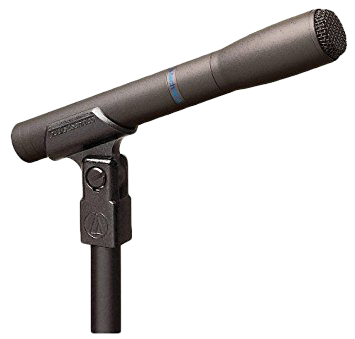While podcasting has technically been around since 2004, when Dave Winer and Adam Curry began syncing subscribable audio content to personal digital media players, according to Pew’s recent State of the News Media, over 60 percent of the population has still never listened to a single one.
Which means, despite how much it might feel like you potential podcasters out there are just another commuter attempting to squeeze on the on the packed 7:00am express train, there are, statistically, an army of ears out there just waiting to be hooked by your 90-minute explications on the reasons your pet parrot Ned is qualified to serve on the local selectboard.
Plus, thanks to previously-unfathomable advances in audio technology, you can do it like the pros do for less than $1,000.
3 Reasons Why Podcasts Will Best Stretch Your Advertising Dollar
For my podcast, Mind of the Wandering Monk, I’m able to produce episodes that put NPR to shame — and from such absurd locations as a rainy front porch, a politically-themed puppet show on a hillside amphitheater, and a bathroom closet — simply because I knew which gear was worth investing in and which enticing features weren’t worth their exorbitant cost.
Here’s all I use to get my poetic ramblings about love and life out into the world…
ZOOM H6 Recorder
The heart of my setup, and the most expensive, important piece of equipment, is a Zoom H6 Handy Recorder.
This 6-track recorder comes with two directional microphone attachments: an XY mic, and a Mid-Side mic; both of which are very easy to click in and use. Just add four AA batteries and an SD card (like the 64 gig ScanDisk Ultra), and you’ve got the ability to record professional sounding audio in the palm of your hand.
SONY MDR-7506 HEADPHONES
This sounds obvious, but it bears emphasizing: Listening to your audio as your recording is one of the most important parts about producing a professional podcast. That way, you know your levels are adjusted and your mics are positioned correctly, which will save you countless hours of editing and fine-tuning when putting your final episode together.
At around $70, the Sony MDR-7506 studio headphones — great for both field work and post-production editing — are a steal.
AUDIO-TECHNICA CARDIOID CONDENSER MICS
External mics are essential for capturing those subtle nuances that are intrinsic to what we think of as ‘studio quality’ sound.
A pair of Audio-Technica Cardioid Condenser mics will do the trick. However, be warned, they capture every single detail, which is why I use an On-Stage Gooseneck pop filter to avoid those pesky popping plosives.
ON-STAGE DESKTOP STANDS
Keeping your hands free to adjust audio levels on the fly is vitally important when recording a conversation.
I carry two On-Stage desktop stands, each with an added boom extension, so that I can keep track of the audio levels and my guests don’t have to hunch over the mic when discussing their adventures from Paris in the sixties.
AUDIO-TECHNICA OMNIDIRECTIONAL CONDENSER MIC
Hand-held directional field mics are extremely functional for interviewing in noisier environments.
The Audio-Technica Omnidirectional Condenser AT-8010 weighs a mere 5.8 ounces and already comes with a foam pop filter.
PELICAN 1510 CASE
To keep the gear organized and, most importantly safe, I use a Pelican Case with custom inserts.
This baby is mobile, waterproof, and secure (when padlocked), plus it’s got a sweet extendable handle for when you’re walking down the sidewalk from one train track to the next.
LOGIC PRO X
All of my editing work is done in Logic Pro X, a reasonably priced audio editing program used for everything from post-production film work, to home studio editing for music and podcasts.
Though it’s easy to get intimidated by the limitless options of how you can tweak your sound, there are many YouTube tutorials and online forums out there that hold tons of time-saving tricks on how to use the program best.
We might not all be working for Radiotopia, benefiting from their million dollar grant from the Knight Foundation, working in a soundproof studio with a team of editors and producers. But that doesn’t mean you can’t still create a remarkably unique work of professional quality audio art.











